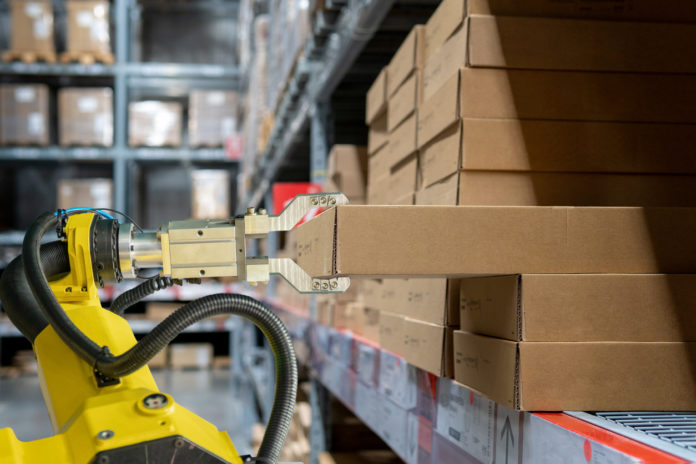Robotics has the potential to make significant changes to how people live and work in the future, and that revolution has already begun. The next few years herald an incredibly exciting time that will see robotics transforming science, manufacturing, exploration, and our daily life. However, several technical, social, and ethical problems with robots need to be addressed first for the industry to realise its full potential.
Challenges That Are Slowing Down Progress in the Robotics Industry
According to The Grand Challenges of Science Robotics report from Science Robotics, there are ten problems in the robotics industry that, when addressed, will pave the way for significant breakthroughs.
1. New Materials and Fabrication Schemes
Robots have moved from being mostly used for assembling vehicles to being able to explore some of the world’s harshest conditions, aid in law enforcement, and assist in just about every facet of healthcare today. While the overall robotics world is expanding, all robots consist of common components to complete specific tasks.
Understanding these parts and improving them is an important step towards solving problems with robots in the future.
The Main Parts of a Robot
For a robot to be mobile, it should have the following essential components:
Control system
This the brain or the primary governing system of a robot. It consists of hardware and runs on software to make the robot function and carry out assigned tasks.
Sensors
In robotics, sensors are used to measure numbers, like temperature, proximity, torque, velocity, and force. The sensor system provides feedback from the physical world to the digital world using embedded electronics, which is processed by the controller, and the robot takes the appropriate actions.
Actuators
Actuators are actually part of the motor that brings locomotion (movement) to a robot. And, depending on the energy source used, robots can use different types of actuators, including pneumatic, hydraulic, and electric.
The motors used in a robot can also differ on the actuator used in them and the area of operations. For example, some operators would decide on choosing servo motors for robots used under extreme environmental conditions.
Power supply
Robots require a power supply to work. Most robotic applications need a direct current (DC) supply from a battery or a Switching Mode Power Supply (SMPS) unit, which converts alternating current (AC) to DC. The power supply system should have the capacity to provide enough current to drive all loads that are directly or indirectly connected to it.
End effectors
The end effectors are connected to the robot’s arm and can include tools, like tweezers, grippers, and blowtorches.
2. Biohybrid and Bioinspired Robots
One of the biggest problems with robots has been to build units that can comparably mimic the natural system of a human being, with self-healing materials and muscle-like actuators to allow them to function autonomously in various environments.
3. Power and Energy
The effectiveness of a fully independent and mobile robot depends on the battery power, weight, and size. Autonomous robots need the ability to harness energy from the surroundings using vibrations, light, or mechanical movement.
4. Robot Swarms
This approach requires the development of smaller robots that are wirelessly connected to accomplish a single task. These robot swarms need to sense their environment, coordinate with each other, and still act independently from each other.
5. Navigation and Exploration
Future robots require advanced navigation systems that are capable of sensing, mapping, understanding, and reacting to certain elements in their surroundings. Such systems will help robots navigate through narrow confines and rough terrains, and operate in areas where communication can be difficult.
6. Artificial Intelligence (AI) for Robotics
Robots already use pattern recognition to identify objects, but much is required to achieve the intelligence observed in humans and other animals. Such intelligence requires a thorough mapping of human intelligence mechanisms and replicating the same in software.
7. Brain-Computer Interfaces
Brain-computer interfaces allow machine control through direct thought. They are now used to help restore fluent communications in people with speech disability. However, there has been the challenge of developing affordable technology for sensing brain signals and using the technology without being calibrated.
8. Social Interaction
Future robots need to pick up on human social cues and adapt to cultural differences so they can offer appropriate responses. Other social problems with robots include their inability to understand and display emotional responses, as well as maintain such responses for long-term engagement.
9. Medical Robotics
A set of robots under the control of a surgeon may help during patient-specific, critical procedures, while implantable miniaturised multifunction devices may monitor and intervene during medical episodes. However, nano or micro-robots need to be biodegradable and non-toxic, as they swarm through a patient’s body and target diseased locations during therapy.
10. Robot Ethics and Security
Possible over-reliance on robots could see sensitive tasks suited for humans being delegated to AI, and many people believe that this would make others not likely to take responsibility for their failures. Also, it is speculated that robotics could erode human freedom through over-dependence on automation.
Kate Darling – Ethical Issues in Human-Robot Interaction
According to Kate Darling, interaction with robots will likely deceive people into treating machines as live animals and not as tools. Household robots require personal data to function correctly, but this increases chances of emotional manipulation via in-app purchases and expensive mandatory software upgrades.





